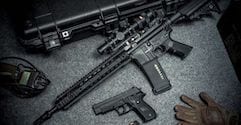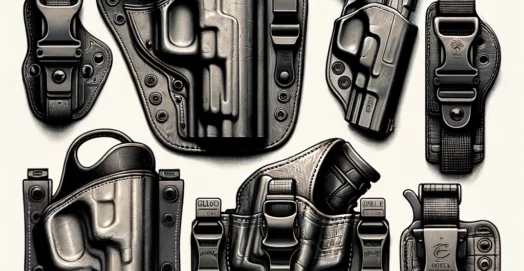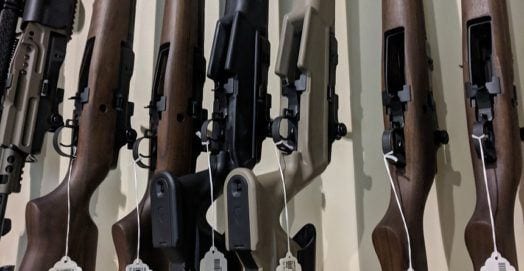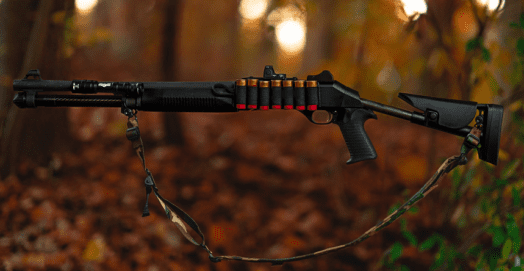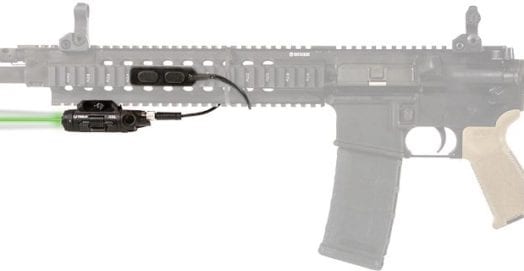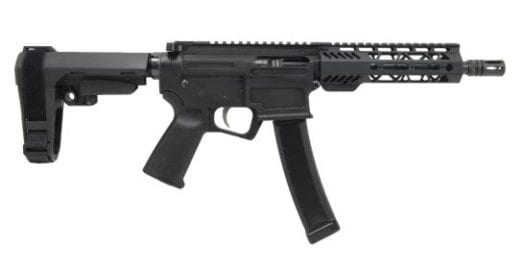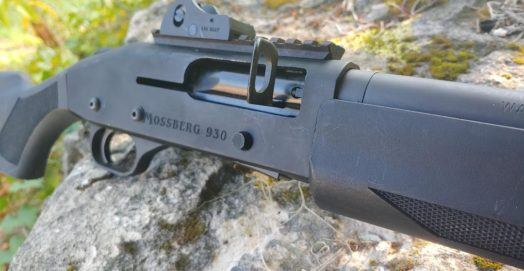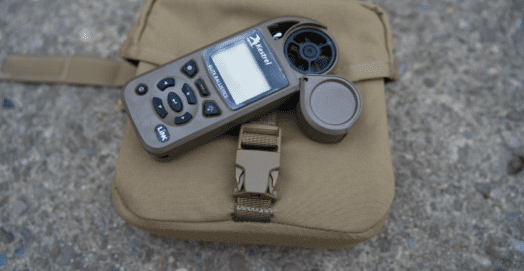You’re Getting it Wrong: Eight Commonly Misused Gun Terms

For eThe gun world abounds with specialized nomenclature. Many misused gun terms are prevalent in the gun world, bringing ire to those who have read their gun terms dictionary. Those who aren’t in the know are bound to use the wrong gun terminology. Even those who call themselves gun nuts have been known to be wrong a time or two.
Gun terminology is important. Being correct makes you sound knowledgeable, reasoned, and allows you to carry a legitimate conversation. This is applicable when teaching others about firearms, and even when debating guns and gun control.
Being educated and sounding educated are two critical components in gun debates. The more you know, and the less your opponent knows, the more you get to stay on the high ground of the educated. Correct gun terminology is a part of this, so let’s review the most misused gun terms.
Contents
1. Clip and Magazine

This is the biggest and most popular gun term people wrongly interchange. Where the confusion between the two came from is the swap from rifles like the M1 Garand to the M14. For some reason, the confusion between a magazine and a clip entered mainstream culture.
While it’s the most common, it’s also the most cringe-worthy. Saying clip when you mean magazine is one the best ways to out yourself as an amateur. Being educated and sounding educated are two different things.
To be educated, you need to know the difference. A clip is a device that is used to hold ammo to quickly reload a magazine. Clips were essential to weapons during the pre-WW2 and Korean War-era.
Bolt action battle rifles like the Mosin Nagant and Springfield 1903 could be rapidly reloaded with stripper clips to keep them in the fight. These weapons had internal magazines that the stripper clips loaded.
In World War 2, the M1 Garand rose to prominence with its semi-automatic action and internal magazine. The En Bloc clip was essential to its function and to its battlefield supremacy. Weapons like the SKS had internal magazines that still relied on stripper clips for rapid reloads.
With the invention of detachable magazines, clips became less and less common. Detachable magazines were a convenient and rapid method to put the weapon back into action after it ran dry. A magazine both holds ammunition and feeds the weapon.
Clips are still used to this day for loading magazines. The ammunition issued by the U.S. military comes on stripper clips and has one-speed loader per bandolier. This allows troops to rapidly load magazines.
So, when discussing magazines and clips: if it feeds the weapon and holds ammo it is a magazine. If it holds ammo and loads magazines it is a clip.
2. Assault rifle vs Semi-auto rifle

This gun term is misused for three reasons: the media, mistaken gun identity, and general firearm ignorance. The term assault rifle has a very specific designation. Ever since the first assault rifle came to be the term was used and fit.
The first assault rifle that was successful is largely credited as the German STG 44, or the Sturmgewehr. It literally means Storm rifle, and storm is often a synonym for assault in the military.
An Assault rifle, as defined by the Defense Department, is a short, compact, selective-fire weapons that fire a cartridge intermediate in power between submachine gun and rifle cartridges.
An assault rifle, by definition, has to be select fire. Select fire being the ability to fire in both semi-automatic and fully automatic modes. So a standard AR 15 is not an assault rifle.
99.99 percent of semi-automatic rifles in civilian hands are not assault rifles, but simply semi-automatic rifles that are fun to equip with your favorite optic. Cosmetic features may scare some less intelligent people, but they don’t make the weapon deadlier in any way.
3. Bullet and Shell vs Cartridge or Round

Many people use the gun term “bullet” to apply to a whole round of ammunition. This is incorrect on many levels. Some people use the term shell to refer to cartridges as well, and this is equally incorrect.
A cartridge is the proper name for a complete round of ammunition. Round is another gun term that is accurate and acceptable. A round or cartridge is made of several different components put together.
Bullets and shells are just components of a cartridge. A cartridge is made up of a projectile aka a bullet, a case, aka a shell, a primer, and gunpowder. Calling cartridges bullets is akin to calling them gunpowder.
4. Handle and Grip

This gun term isn’t heard as often as the others, but when heard will grind the gears of the gun-knowledgable. There is a massive difference between a handle and a grip. Sure, both use your hands, but that is where the differences end.
A grip, like a pistol grip or a vertical grip, is designed to give you control over the weapon. They help a shooter aim, access the weapon’s controls, and then control the weapon during firing.
A handle is most commonly found on medium and light machine guns. These handles make carrying a heavy weapon easy for admin movements. A machine gun like the M240 isn’t ergonomic for easy carry, so a carry handle is a convenient way to place it from place to place.
A grip is used to fire and control, handle, and fire the weapon and a handle is used to carry the weapon.
5. Accuracy and Precision

Even experienced shooters mistake these gun terms. What’s interesting about this nomenclature mistake is that it is made in other categories as well. Outside of firearms, the mistake can be made with science and experiments, as well as with watches.
It is completely possible to be both accurate and precise.
Precision measures the closeness of two or more shots fired from a rifle. For example, if you were shooting at a target and aiming at the center of the target. If you missed the center of the target but consistently landed shots in the left corner, you still shoot with precision.
Accuracy measures how close you are to the target. For example, If you are aiming at a target and striking the bullseye, but the shots are hitting the top, bottom, left and right side of the bullseye, you aim with accuracy, but not precision.
If you aim at a bullseye and strike everywhere on the target, then you are neither accurate nor precise.
If you aim at a bullseye and strike the bullseye in one small grouping you are both accurate and precise.
6. Accidental Discharge Vs Negligent Discharge

Safe gun users often mistake these gun terms. There is a big difference between an accident and negligence. An accident is something that cannot be predicted and cannot be prevented through basic means.
Negligence is something that could have been stopped, but due to human error was not. An accidental discharge is extremely rare for a modern firearm. Firearms do not simply go off.
An example of a possible accidental discharge would be a runaway gun with a machine gun. Another can happen with older single and double barrel weapons. The firing pins can be stuck outwards.
A stuck firing pin can cause the weapon to fire when the breach is closed.
A negligent discharge is easily preventable by following the basic safety rules. If you keep your finger straight and off the trigger of a modern firearm, it cannot and will not fire. Negligent discharges are caused by unsafe behavior with a firearm.
7. Machine Gun Vs Fully Automatic

This gun term can be debated. The ATF defines a ‘machine gun’ as any weapon that fires more than one round per pull of a trigger. The military community defines a machine gun as a fully automatic designed to lay down suppressive fire on a target.
Military machine guns are often belt-fed weapons that serve a squad or platoon support role. The ATF will define an M16 as a machine gun, where the military will not.
Other categories of fully automatics weapons besides machine gun is assault rifle, sub machine gun, and machine pistol.
8. Subcompacts

Subcompact has become a catch-all gun term for small automatic pistols. It hasn’t been applied to revolvers yet, but it wouldn’t be a surprise. All sorts of firearms are now called subcompacts.
This includes pocket pistols like the LCP, to S&W Bodyguard and Walther PPK. These are individual firearms that are not the compact or subcompact variant of any other firearm. A subcompact must have a bigger brother if you will.
The Glock 26 is a subcompact pistol, the compact version is the Glock 19 and the Glock 17 is the full-sized version. A subcompact pistols come from a family of pistols with the same operating mechanism, ammunition, and magazine.
Gun Terms: Be Smart, Get it Right!
Learning proper firearm nomenclature can go a long way to making you not look like a fool. If you are ever unsure start asking question, start researching and you’ll find yourself on the right side of the gun debate.
More than that, you’ll avoid looking like the “new guy” or “new girl” when it comes to discussing firearms with your fellow gun nuts. You may also be able to educate others in the proper terms. If you can learn anything from this though, please don’t call a magazine a clip.





